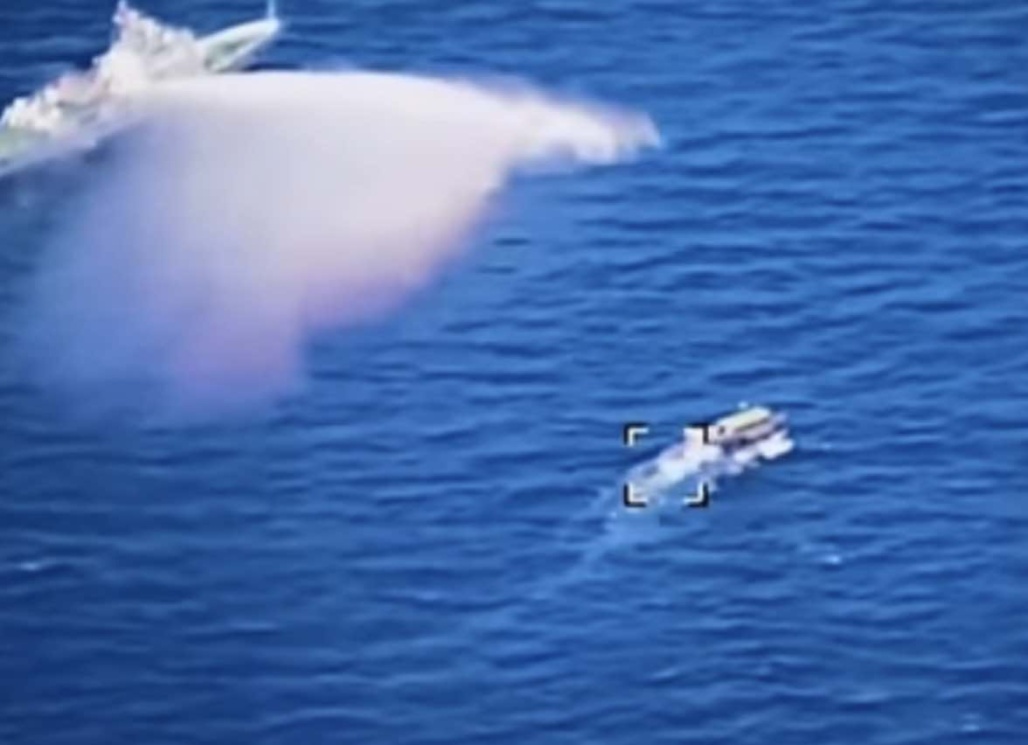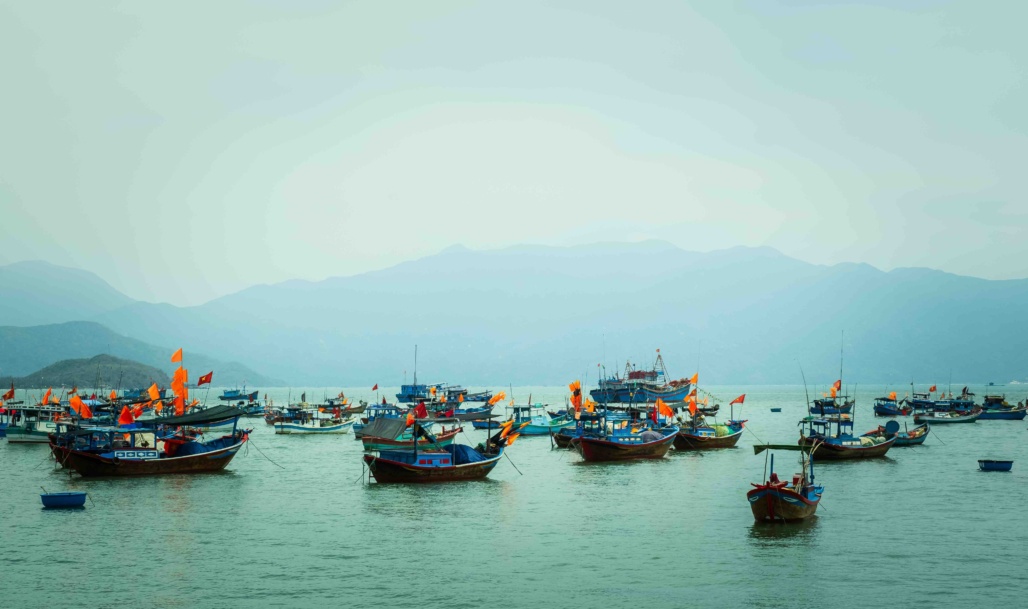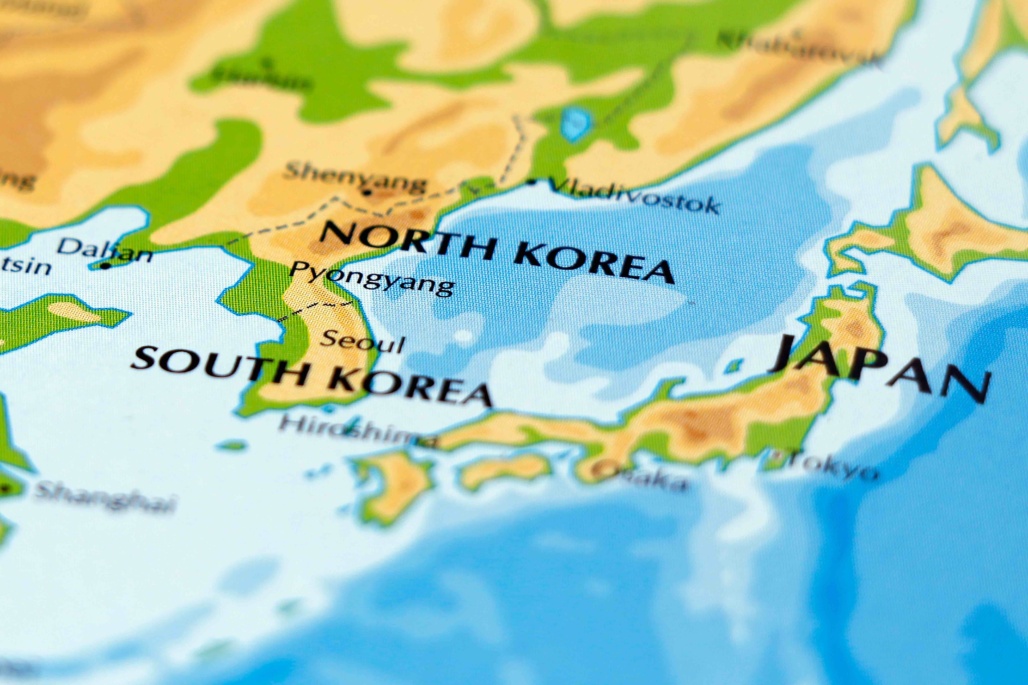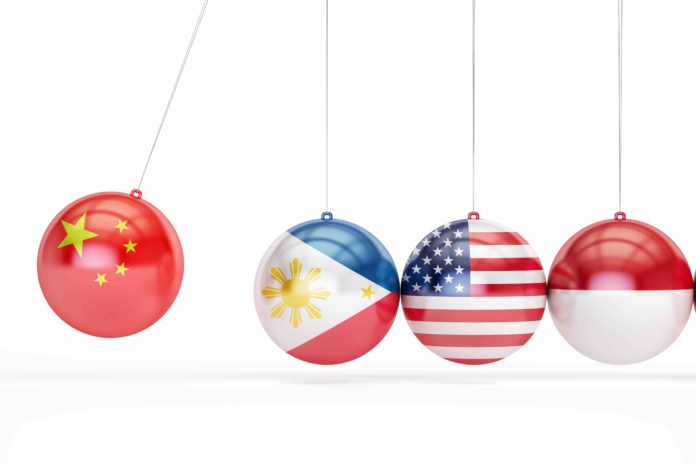The most recent moves involving the Reciprocal Access Agreement between the Philippines and Japan, the joint military exercise of US-Japan-Philippines in South China Sea, the joint naval and air patrol of the Chinese People’s Liberation Army (PLA) in the South China Sea, the US plan to station a new missile system in Asia, the expansion of AUKUS (a trilateral security partnership composed of Australia, the UK, and the US), and the US-Japan-Philippines Trilateral Security Summit in Washington have all pointed to the increasing geopolitical tensions in the Asia-Pacific region. All these military muscle-flexing activities are very worrying signs that may undermine the peace and stability of Asia, including the South China Sea, the Taiwan Strait, and the Korean Peninsula.

First, Japan and the Philippines, on April 11, reached the Reciprocal Access Agreement (RAA), in which the Philippine forces will visit Japan for training and joint exercises, and vice versa. This is a landmark military agreement for both countries, cementing their bilateral military relations after Japan signed a similar agreement with Australia in 2022 and with the United Kingdom in 2023. Although the Japanese constitution after the Second World War stated that there should not be armed forces to be stationed in overseas countries, Japan in 2009 sent its Self-Defence Force (SDF) to Djibouti in Africa for the sake of curbing pirates—an unprecedented action followed by the Kishida government’s updating and approval of Japan’s national security strategy, national defence strategy, and defence buildup programme in December 2022. These three documents approved in 2022 could be seen as a turning point in Japan’s defence policy, which turned from the previous principle of pacifism to perhaps the tenet of assertive self-defence and active deterrence. In recent years, Japan has increased its military and defence budget to deter its perceived military threats, including North Korea and China.
The Philippines Ambassador to the US, Jose Manuel Romualdez, said on April 10 that the Japanese SDF, US forces, and the Philippine force would regularly conduct naval drills, adding that both the US and Japan are the closest allies of the Philippines. Given the recent and ongoing disputes between the Philippines and China over some of the islands in the South China Sea, Romualdez’s remarks can be interpreted as the Philippine perception of the so-called “China threat” that, according to Manila, is “real.”
In recent months, the Chinese coastguard vessels have used water cannons against the Philippine boats that attempted to provide supplies to the marines on the Sierra Madre, a Second World War-era ship that was marooned by the Philippines in 1999 and that carried the Philippine flag. The rusty and wrecked ship was a symbol of the territorial claims made by the Philippines, but it remains a thorn in the eyes of the Chinese military. It was reported that China in 1995 seized the Mischief Reef, an action that promoted the Philippines to run the Sierra Madre aground at the Second Thomas Shaol, with the locations of both islands less than 200 nautical miles from Palwan, which is an exclusive economic zone of the Philippines.

Second, on April 7, the US, Australia, Japan, and the Philippines conducted naval drills together for the first time in the Philippine exclusive economic zone, involving the US combat ship USS mobile (LCS-26), the Australian frigate HMAS Warramunga (FFH152), the Philippine frigate BRP Antonia Luna (FF151), and the Japanese guided-missile destroyer JS Akebono (DD108). The content of the drills included anti-submarine training and naval patrol. This joint military exercise claimed to uphold “the freedom of navigation and overflight” and to “strengthen support and international cooperation to support a free and open Indo-Pacific.” The joint statement of the four nations added that they “reaffirm the position regarding the 2016 South China Sea Arbitral Award as a final and legally binding decision on the parties to the dispute.” Indeed, China rejected the decision of the tribunal, but the joint statement appeared to target at China at least implicitly.
Third, as such, the People’s Liberation Army (PLA) conducted its joint naval and air patrol on April 7 in the South China Sea, declaring that it “grasped all the military organisations and activities that stir up the situation and hot spots in the South Sea (Ming Pao, April 8, 2024).” The Liberation Army Daily said that the Philippines pulled other external countries into the affairs of the South Sea, that it created troubles, and that China has shown a great deal of “kind intentions and restraint,” but “this does not mean that the situation will be spoiled and tolerated endlessly.” Clearly, the Chinese side formally warned about the military drills that involved the four nations.
Just three days before the naval drills conducted by the US, Australia, Japan, and the Philippines, the US Navy held a swearing-in ceremony for the new commander of the US Pacific Fleet, an event that invited the Taiwan naval commander Tang Hua to attend. He was welcomed by US Indo-Pacific Command Commander John C. Aquilino. Aquilino said in his address to Sydney’s Lowy Institute on April 9 that China’s actions against the Philippines, especially in Second Thomas Shaol, were “dangerous, illegal, and they are destabilising the region (Reuters, April 9, 2024).” He even added that China’s action could be seen in other places and that it is “trying to gain territorial space unilaterally through force.” The remarks made by Aquilino could be seen as the US military’s perception of China.
Fourth, on April 8, it was reported that US Army Pacific Commander General Charles Flynn revealed in South Korea the deployment of a new missile launch system in the Asia-Pacific region, a move that appeared to aim at North Korea and China. The Chinese Foreign Ministry responded by saying that China does not compete with other nations in military power and that it pursues a defensive national defence policy. However, the US deployment of its missile system, including the use of the Standard Missile 6 interceptor and the maritime-strike Tomahawk, in Asia is a testimony to Washington’s perception of the military threats from North Korea and China.

Fifth, on April 10, it was reported that AUKUS – a trilateral security partnership between Australia, United Kingdom (UK) and US – will likely be expanded to embrace Canada and Japan. Given that the Five Eyes include Canada, US, UK, Australia and New Zealand, the possible expansion of AUKUS to include Japan and Canada into its umbrella means the consolidation of the two security organizations. AUKUS has conducted its Pillar One programme, in which Australia is supported to acquire conventionally armed, nuclear-powered submarines as soon as possible. In March 2023, the three nations announced an “optimal pathway” to achieving nuclear-powered submarine capability while setting “the highest non-proliferation standard.” In Pillar Two, the three nations aim to protect sensitive technologies and cooperate in the areas of quantum, Artificial Intelligence, and autonomy, hypersonics and counter-hypersonics, electronic warfare, undersea warfare, and cybersecurity networks. The expansion of AUKUS to embrace Canada and Japan will naturally heighten the geopolitical tensions in the Asia-Pacific region, although it vows to maintain “the highest non-proliferation standard.”
Sixth, the first trilateral US-Japan-Philippines Summit was held in Washington on April 11, during which President Joe Biden, Prime Minister Fumio Kishida and President Ferdinand Marcos Jr. met and came up with seventy agreements, mostly on security and defence affairs. The 1960 US-Japan Security Treaty was upgraded by having Joint Operation Command in 2025, strengthening mutual coordination, reforming the command structure and content. President Biden told Kishida and Marcos that the US defence commitment to Japan and the Philippines are “ironclad.” The Summit also reached an agreement to set up the Luzon Economic Corridor – a move that was interpreted by the international media as countering China’s Belt and Road Initiative. Without mentioning China in name, the Summit has been widely interpreted as a move by the three nations to share military technology, form a military and security pact, and to improve their military and security communication and coordination. President Marcos is far more pro-US than his predecessor Rodrigo Duterte, whose relations with China were more cordial – an indication that the Philippine President’s political orientation toward US and China is the most important shaper affecting and oscillating the military-security relations between Manila, Washington, and Beijing.
China has reacted to the Summit negatively: its Foreign Ministry spokeswoman Mao Ning said Beijing “firmly opposes the relevant countries manipulating bloc politics, and firmly opposed any behaviour that provokes or lays plans for opposition and hurts other countries’ strategic security and interests.”
Amid the heightening tensions in the Asia-Pacific region, however, a positive tone of Sino-Indian relations was heard when Indian Prime Minister Narendra Modi emphasized the importance of both sides to improve bilateral relations through diplomatic dialogue. He said: “It is my belief that we need to urgently address the prolonged situation on our borders so that the abnormality in our bilateral interactions can be put behind us.” Diplomats from both India and China convened the 29th meeting in Beijing in March 2024, agreeing with the principle that both sides must maintain diplomatic and military communications and stick to their spirit of discussions. Just a week prior to the Indian elections, Modi’s emphasis on peace may appeal to the Indian voters for their support of his party. Hopefully, both India and China will persist in their search for construction solutions amid an increasingly anti-China climate in India, where some politicians and mass media appear to be very hawkish and negative towards China.
Still, the security relations between China and the Philippines remain rocky. In April 2023, Manila Times reported that the Chinese side prepared some solutions to solve the territorial disputes over the islands in South China Sea, but the Philippine side refused to consider further as some proposed solutions ran counter to the sovereignty interest of the Philippines. However, it is hoped that both sides can avoid the controversial “high politics” issues, notably territorial disputes, but instead focusing on economic pragmatism and cultural, educational, social exchange and tourism. Otherwise, any overemphasis on nationalism would likely propel the two nations toward a scenario of endless but time-consuming territorial disputes and unnecessary military conflicts.
During the increasing geopolitical tensions in Asia, the relations between China and North Korea are bound to be consolidated. Zhao Leji, the chairman of the Chinese National People’s Congress, visited Pyongyang on a three-day visit on April 12, strengthening the bilateral relations between Beijing and Pyongyang while preparing for a possible meeting later this year between President Xi Jinping and North Korean counterpart Kim Jong-un. If so, the recent and ongoing consolidation of the US-led security alliance is perhaps leading to a kneejerk reaction from China and North Korea.

In conclusion, the most recent and ongoing developments of the military drills and security pacts between the US, Philippines, Japan, and other US allies have already heightened geopolitical tensions to an unprecedented degree, causing uneasiness and uncomfortable responses from China. The recent phone dialogue between President Joe Biden and President Xi Jinping appeared to be suddenly shrouded with dark clouds and uncertain future, especially in the face of the forthcoming US presidential election. In the study and analysis of geopolitics, the most important problems remain mutual perceptions and corresponding reactions. If China has already been perceived as a security and military “threat,” together with its neighbour North Korea, the ideologically driven security alliance led by the US is arguably a natural response. If China and North Korea are firmly perceived as military and security threats, then the recent and ongoing military and security responses from the US-led allies will likely lead to a corresponding response from Beijing and Pyongyang in the form of consolidating the Beijing-Pyongyang relations, thereby propelling the Asia-Pacific region to a highly militarily unstable, geopolitically uncertain, and very challenging security situation in the coming years.
*Sonny Shiu-Hing Lo is a political scientist, veteran commentator, and author of dozens of books and academic articles on Hong Kong, Macau, and Greater China




















